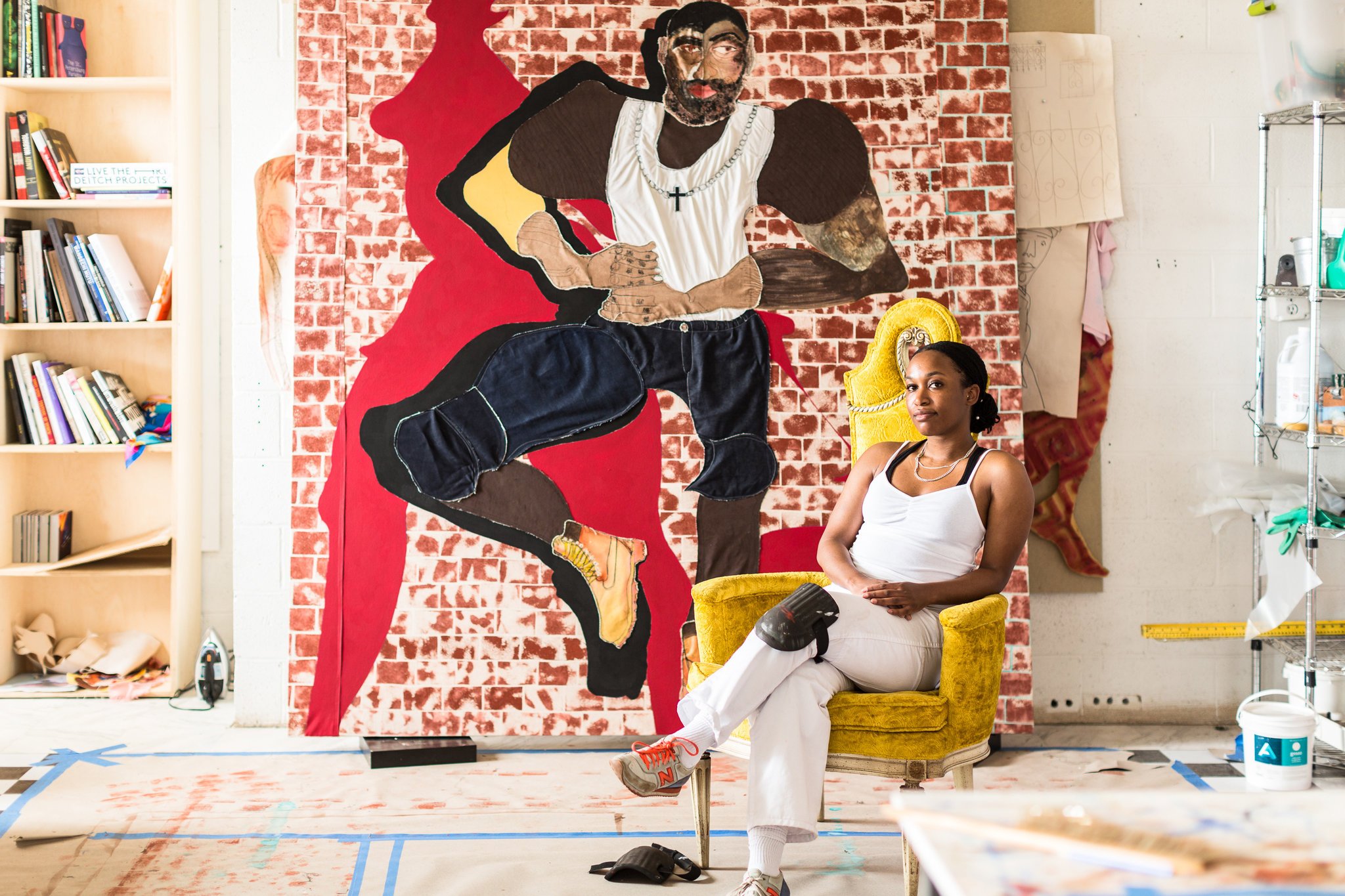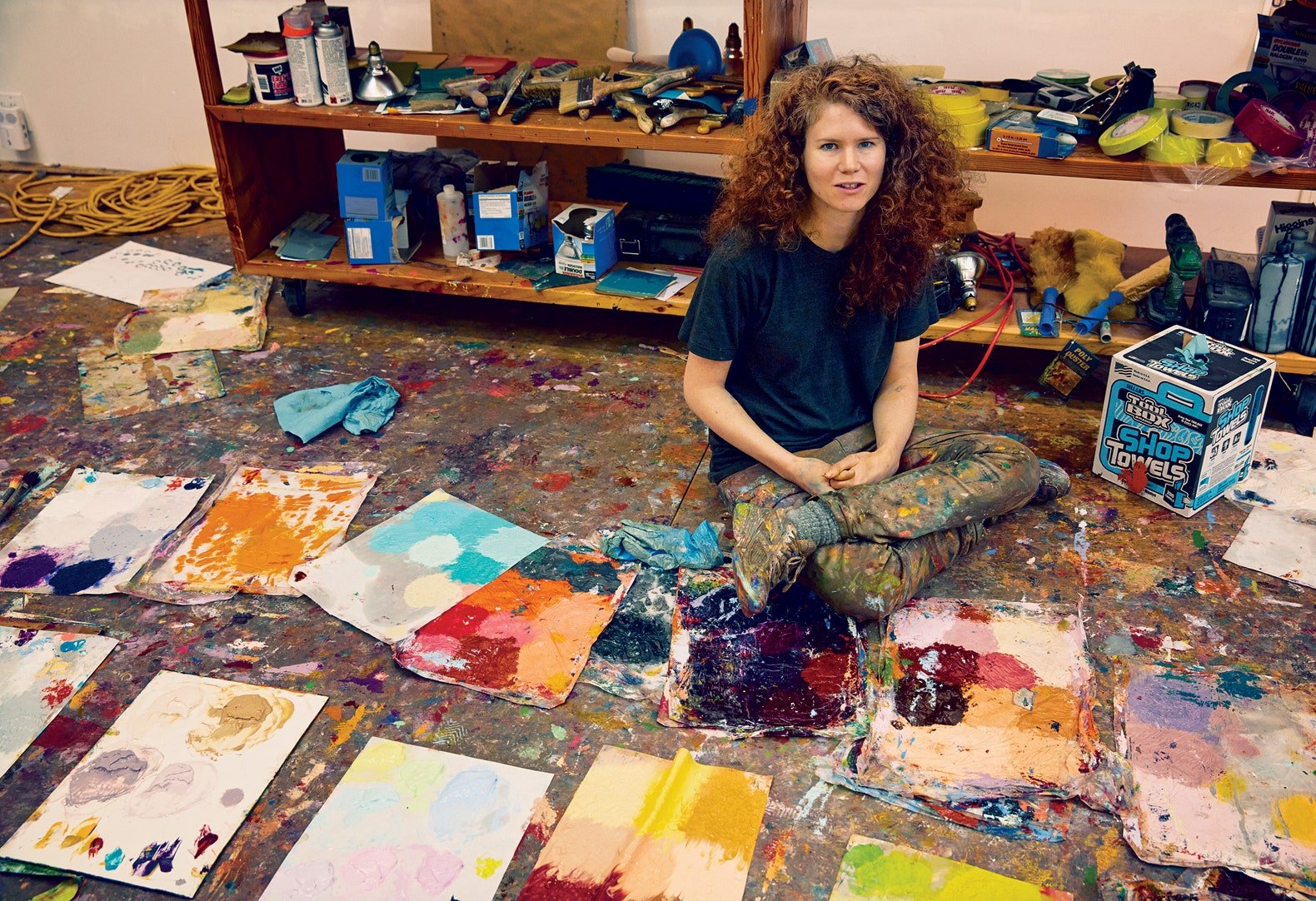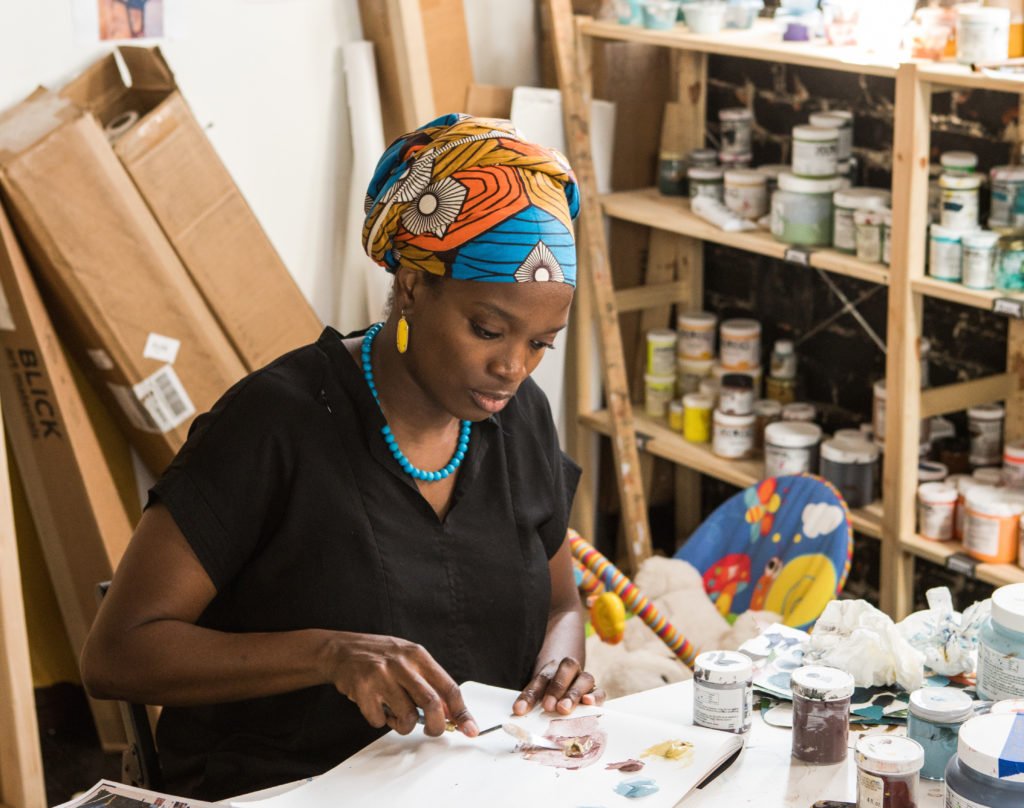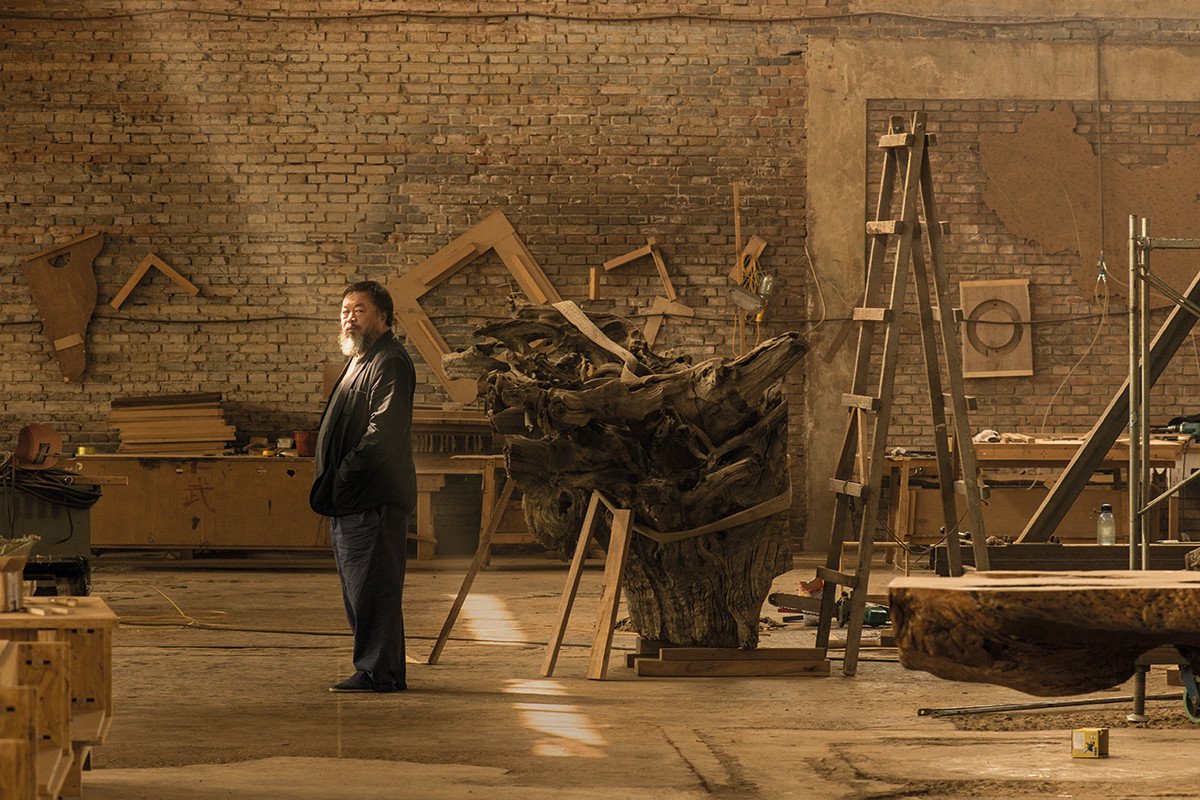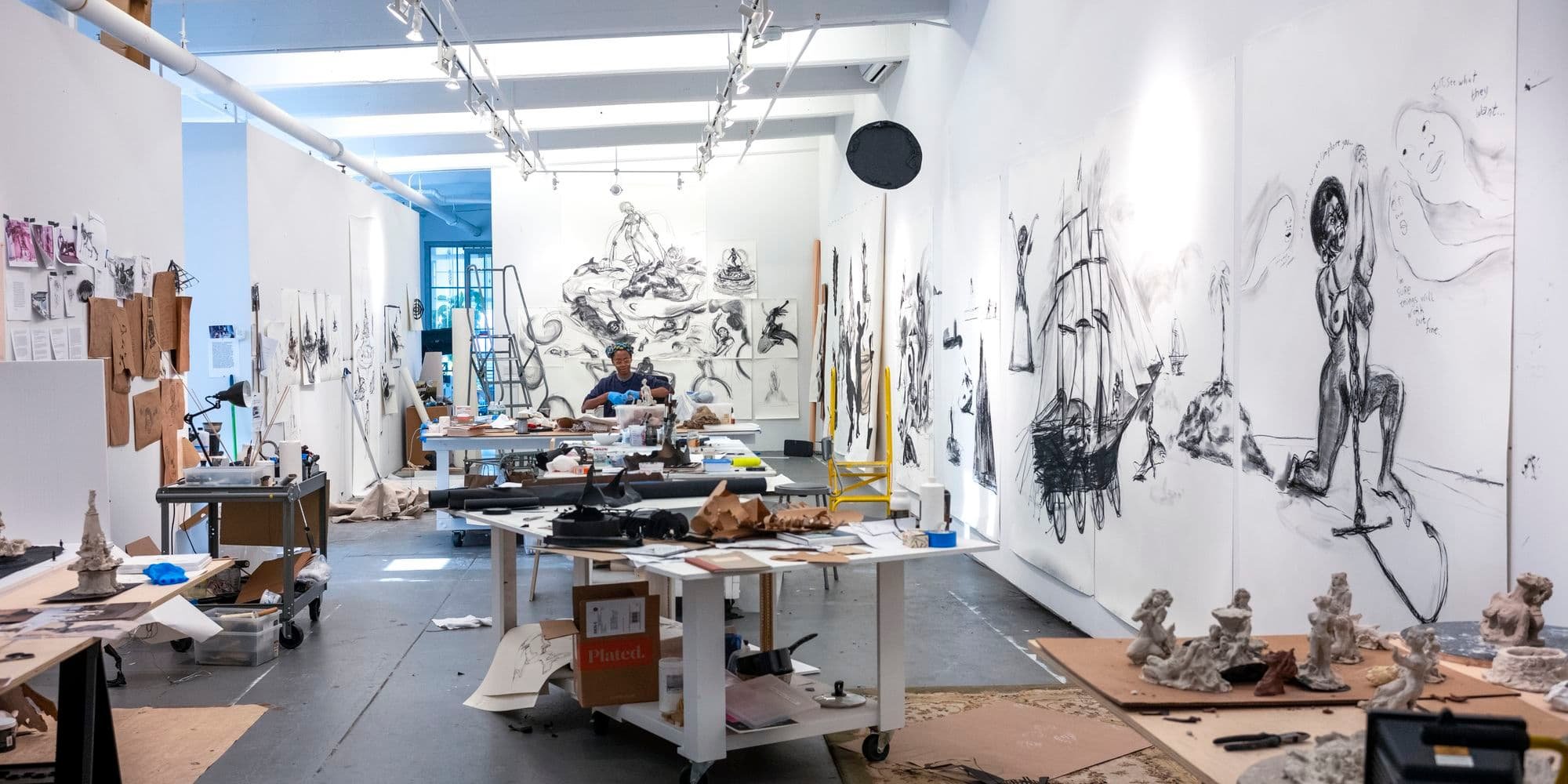Behind the Studio Doors: Discovering Artistic Wonder
The artist’s studio stands as a sanctuary, a place where creativity and imagination intertwine to give birth to masterpieces. It is a space filled with the artist’s essence, their dreams, and their unique perspective on the world. The allure of peeking into this private realm has captivated art enthusiasts and the public alike for centuries, offering a glimpse into the creative process and the inner workings of the artist’s mind.
Willem de Kooning in his studio, East Hampton, Long Island, 1966
Known for his expansive studio in East Hampton, New York, de Kooning's space reflected his abstract expressionist style with large canvases, splattered paint, and a sense of controlled chaos that fueled his creativity. (© Courtesy Masters & Masterworks Productions/The Willem de Kooning Foundation)
The Sanctuary of Creativity
For artists, their studio is not merely a workspace but a sacred haven where ideas take shape and emotions find expression. It is a space carefully curated to inspire and stimulate the creative flow, filled with tools of the trade, works-in-progress, and sources of inspiration ranging from books to found objects. The layout and ambiance of the studio often reflect the artist’s personality and working style, creating an environment conducive to exploration and experimentation.
Perry Ogden, Francis Bacon's 7 Reece Mews studio, London, 1998
Bacon's studio in London was famously chaotic, strewn with paintbrushes, torn canvases, and various materials. This disarray mirrored his visceral and emotionally charged paintings, offering a glimpse into his intense artistic process. (© Courtesy of the Francis Bacon Estate)
A Window into the Creative Process
One of the most intriguing aspects of an artist’s studio is its role as a window into the creative process. Unlike the polished galleries where finished artworks are displayed, the studio offers a raw and unfiltered view of artistic evolution. Sketches, studies, and unfinished pieces provide insights into the artist’s techniques, challenges, and moments of inspiration. Visitors can witness the layers of creation, from initial concepts to final touches, unraveling the mysteries behind each stroke of genius.
Frida Kahlo in her studio, c. 1943
Kahlo's "Casa Azul" (Blue House) in Mexico City, now a museum, preserves her studio space as she left it. Filled with colorful textiles, pre-Columbian artifacts, and personal mementos, the studio reflects Kahlo's deep connection to Mexican culture and her introspective artistic journey. (© Photographed by Fritz Henle)
The Power of Context
Seeing artworks within the context of the studio adds depth and meaning to the viewing experience. Surroundings influence perception, and observing a painting or sculpture in the same space where it was created fosters a deeper connection with the artwork. The studio’s ambiance, whether chaotic or meticulously organized, becomes an integral part of understanding the artist’s vision and the emotions conveyed through their art.
Cy Twombly series Fifty Days at Iliam in the Artist's Studio, Via Monserrato, Rome
Twombly's studio in Rome was a sanctuary of artistic contemplation and poetic expression. Filled with large-scale canvases, scribbled notes, and classical references, the studio reflected Twombly's unique blend of abstract gesture and intellectual depth in his paintings. (© Photographed by Annabelle d'Huart)
Inspiration and Exploration
For the public, visiting an artist’s studio offers more than a glimpse into creativity; it serves as a source of inspiration and a journey of discovery. Engaging with the tools, materials, and creative processes firsthand sparks curiosity and ignites the imagination. Many studios also serve as multifunctional spaces, hosting workshops, talks, and collaborative projects that bridge the gap between artists and the community, fostering dialogue and appreciation for the arts.
Helen Frankenthaler with works in progress in her studio, East 83rd Street and Third Avenue, New York, 1961
Known for her groundbreaking technique of staining raw canvas to create ethereal and luminous compositions, Frankenthaler's studio in Connecticut was a serene yet vibrant space. Large windows flooded the studio with natural light, influencing her use of color and space in her iconic works. (Photograph by André Emmerich © Estate of André Emmerich)
Preserving Legacies
Beyond the present moment, artist studios hold historical and cultural significance. Preserving these spaces, whether through museums, archives, or artist residencies, ensures that legacies endure, and artistic contributions remain accessible to future generations. Documenting studios as they are, with all their quirks and idiosyncrasies, preserves not just artworks but the spirit of creativity that permeates these sacred spaces.
Agnes Martin working in her studio in New York in May 1961
Martin's studio in New Mexico was a place of serene minimalism, reflecting the meditative quality of her abstract paintings. The simplicity of the space, with its emphasis on solitude and introspection, mirrored Martin's pursuit of harmony, beauty, and transcendence in her art. ( ©Fritz Goro/Life Picture Collection)
Conclusion
The artist’s studio embodies the essence of artistic expression, encapsulating dreams, visions, and the relentless pursuit of beauty and meaning. Its uniqueness lies not only in its physicality but in the intangible aura of creativity that envelops it. As the public continues to be fascinated by the mystique of artists and their creative processes, the allure of stepping into an artist’s studio remains an ever-enchanting experience—a journey into the heart of artistic ingenuity and inspiration.
The creative spaces belonging to several contemporary artists







